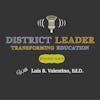Educational Leadership: Navigating the Shifting Technological Landscape in 2024 and Beyond
The K-12 and higher education landscapes are transforming rapidly, fueled by technological advancements, budgetary shifts, and evolving needs. 2024 presents a pivotal year for educational leaders, demanding agility, innovation, and a keen understanding of emerging trends to guide their institutions through this dynamic period.
Budgetary Considerations and the Impact on Technology:
The expiration of ESSER funding in September 2024 poses a significant challenge for many K-12 schools. This funding had been instrumental in sustaining new educational technology programs, including device provision. Schools must seek alternative solutions for device lifecycle management and refreshes, potentially with tighter budgets. This requires exploring options like asset tagging, break-fix services, and cost optimization strategies to maximize the lifespan of existing devices while finding the best value for future purchases.
The Rise of AI in the Classroom:
Artificial intelligence continues to be an important topic in educational technology, with its potential to alleviate teacher workloads and personalize learning experiences. AI-powered tools can help with administrative tasks, analyze student data for informed instructional adjustments, and even provide personalized learning models. While not a panacea for teacher burnout, AI can offer valuable support in classrooms grappling with staffing shortages and demanding workloads.
The Evolving Network Landscape:
Bandwidth and network management remain critical aspects of K-12 education. While Wi-Fi 7 adoption might be limited in 2024, advanced network monitoring and analysis technologies will be crucial. These solutions offer single-pane-of-glass dashboards, allowing IT administrators to identify and address connectivity issues remotely, saving time and resources.
Building a Secure Foundation with Zero Trust:
The zero-trust security model, gaining traction in other industries, offers a framework for K-12 schools, colleges, and universities to enhance data security. Implementing identity and access management (IAM) strategies, including multi-factor authentication and single sign-on, is crucial to zero trust. These readily available solutions can significantly improve security even with limited cybersecurity expertise.
Prioritizing Safety and Well-being:
School safety remains paramount, and technology plays a crucial role. From physical access control systems to tools that detect potentially harmful student behavior, technology can contribute to a safe learning environment. Advanced safety solutions incorporating AI and IoT are also emerging, offering holistic protection across campuses. Furthermore, technologies like GoGuardian's Beacon can monitor student activity for signs of distress, contributing to mental health support and well-being initiatives.
Leadership Imperatives:
In this dynamic environment, effective leadership is vital. Here are critical imperatives for educational leaders in 2024 and beyond:
- Embrace Lifelong Learning: Leaders must actively embrace continuous learning and improvement in order to implement the best practices in educational technology.
- Foster a Collaborative Culture: Collaboration between IT, educators, and other stakeholders is crucial for effective technology integration and utilization.
- Data-Driven Decision Making: Leveraging data insights to inform technology investments, resource allocation, and policy decisions will ensure strategic and efficient technology use.
- Equity and Inclusion: Technology integration must be guided by principles of equity and inclusion, ensuring all students have access to the necessary tools and resources needed to thrive.
- Advocacy and Communication: Leaders must advocate for policies and funding that support responsible technology adoption and utilization in education.
By embracing these imperatives and proactively navigating the evolving landscape, educational leaders can ensure their institutions foster a thriving learning environment for all students in the years to come.
Reflective Questions:
- How prepared is my institution to manage device lifecycles without ESSER funding?
- What existing AI solutions could alleviate teacher workload and personalize learning in our classrooms?
- Does our network infrastructure offer sufficient monitoring and analysis capabilities to handle growing bandwidth demands?
- Are we taking steps towards implementing zero-trust security principles through identity and access management?
- How can technology effectively contribute to both physical and mental health safety within our school community?
Tasks:
- Conduct a technology needs assessment: Evaluate the organization's current network infrastructure, hardware, and software to identify areas for improvement and cost optimization.
- Explore AI-powered solutions: Research and pilot AI tools that can support teachers with administrative tasks, data analysis, and personalized learning interventions.
- Upgrade network monitoring tools: Invest in solutions that offer real-time insights into network performance and enable remote troubleshooting.
- Implement multi-factor authentication and single sign-on: Enhance security by requiring additional verification steps for user access and providing seamless login across platforms.
- Review student safety technologies: Consider implementing tools for physical access control, behavior detection, and mental health monitoring while ensuring ethical and responsible use.









